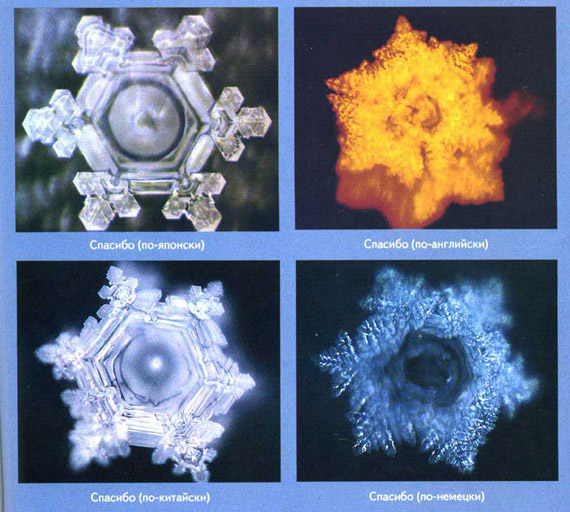The mysterious world of lefties. Exercise "Pose of Napoleon"
I came across one old test for determining the character of a person. And to be more precise, this is an attempt to express character analysis based on functional asymmetry of the right and left hemispheres of the brain. Of course, the test results should not be taken as absolute truth, because despite all the achievements of science, the proverb "alien soul - darkness" still remains relevant. For me, it was interesting not so much the test itself, but the fact that statistics were obtained on the basis of observation and a survey of 500 people.
The study itself will actually include four tests, in each of which the dominance of the right or left hemisphere of the brain is determined. Further, the combination of these four tests gives 16 possible combinations. Each of them has its own psychological portrait. In the future, conventions are adopted, "P" is the right reaction to the test, "L" is the left reaction to the test. After passing 4 tests, you will get a combination of 4 letters. So:
Test 1. Leading hand. If, when the fingers are interlaced, the left finger is on top, then you mark “L” for yourself, if the right finger marks “P”. In the general case, “L” is associated with a more emotional personality pattern, “P” - with the analytical one.
Test 2. Leading eye. It is necessary to look at any object through the scope (for example, the tip of a pen or a hole in a piece of paper). If you close the leading eye "P", then the object will shift relative to the sight. If you close the non-leading eye "L", then there will be no displacement. In the general case, the leading eye “P” corresponds to a firm, persistent, more aggressive character, to the non-leading “L” - to a softer and more compliant one.
Test 3. Pose of Napoleon. If the left hand is on top of the chest when weaving the arms, it is necessary to mark “L”, the right - “P”. In the general case, the left hand on top indicates the ability to coquetry, the right hand on simplicity.
Test 4. Applause. When committed with the right hand, mark "P", with the left - "L". In the general case, applause with the right hand indicates a more decisive character, with the left about indecision, the desire for increased substantiation of one’s actions.
After passing these four tests, a combination of their four letters should be obtained (the letters are arranged in the order of numbering of the tests), then 16 possible combinations are considered, each of which corresponds to its psychological portrait. So:
1. STDs. Conservative type of character. Orientation to the generally accepted opinion, to stereotypes. Correct behavior, lack of conflict, unwillingness to argue and quarrel.
2. PPPL. Uncertain conservatism, weak temperament. If there is one test against the background of the opposing others, the corresponding character trait manifests itself most vividly - in this case, indecision.
3. PPPL. Such a person has the ability to coquetry, decisiveness, a sense of humor, activity, temperament, artistry. When communicating with him, humor and determination are necessary, since this strong character does not perceive weak types. According to statistics (based on the observation of 500 people), this type of character is inherent in 16.5% of men and 17.9% of women.
4. PPLL. A rare and independent type of character. Close to the previous type, but softer, indecisive
and less energetic. Some contradiction between indecision and (left applause) and
hardness of character (right leading eye). High contact, but slow addiction.
5. PLPP. A business type of character combining analytical stock and softness as the main feature. More often
occurs in women (3.6%). The common type of business woman is slow addiction and caution.
Such people do not go to the conflict in the "forehead", they prevail calculation, tolerance, slowness in
the development of relationships, some coldness.
6.PLPL. The weakest type of character, very rare. Defenselessness and weakness are associated with both ability
to go into conflict, and with exposure to various influences. According to the statistics found
only in women - 0.8%.
7. PLLP. The tendency to new experiences and the ability not to create conflicts. Some inconstancy
ability to flirt on the "right", analytical background with special softness. Similar characters
characterized by emotional slowness, languor. Simplicity and rare courage in communication,
ability to switch to a new type of behavior. More common in women is 8.5%, in men - 3.5%.
8. PLL. Unstable and independent character, the main feature is analyticity in combination with others
"left" tests. The desire to do everything and decide for yourself. This type of character is not common, 2.6%
in men and 1.6% in women.
9. STD. One of the most common types of character (15.7% in men and 12.2% in women),
with very good adaptation to various conditions. The main feature of emotionality combined
with insufficient perseverance. High exposure to other people's influence. Friendliness
easily contacts almost all other types of character. Men have emotionality
lowered, there is a tendency to phlegmatic.
10. LPPL. Even less perseverance, gentleness, pliability, naivety. Requires extra careful
self-attitude is a type of "little queen."
11. LPLP. The strongest type of character, difficult to convince, it requires a strong
diverse influence. Able to persevere, perseverance in achieving goals. Strong
individuality, energy, ability to overcome difficulties, some conservatism.
Such people do not like infantility.
12. LLL. Strong, but unobtrusive in nature, almost unbelievable. Main feature
- internal aggressiveness, covered by external softness and emotionality. Quick interaction
but slow rapport. Difficulty in making friends.
13. LLPP. Friendliness and simplicity, some scattered interests and a tendency to introspection.
14. LLPL. The main features of this character are simplicity, gentleness, credulity. This is a very rare type,
in men almost never occurs.
15. LLLP. Emotionality combined with determination, as the main feature. Energy, some
the dispersion leads to the fact that such characters are possible emotional, quickly accepted,
ill-conceived decisions.
16. LLL. The owners of the full set of "left tests" are people who are characterized by the ability to re-create
take a look at things, the greatest emotionality, individuality, selfishness, stubbornness, security sometimes
turning into isolation.
Observations showed that with matching tests, the communicants have a state of "mental comfort"
and mutual sympathy. Even accidentally formed companies usually consist of people who are similar in nature,
having similar tests. The greatest effect is possible with full coincidence, mutual antipodes occur
rarely.
Literature:
1. Bragin N., Dobrokhotova P. "Functional asymmetries of man"
2. Springer S., Deutsch G. "Left brain, right brain"
3. Maslov S.Yu. "Asymmetry of cognitive mechanisms and its consequences"
The universe is an asymmetric ensemble.
I believe that life in the form as we know it should be a function of the asymmetry of the world or the consequences arising from it.
Louis Pasteur
It seems to us that the picture of the world that opens before the eyes is holistic, continuous. But in fact, there are two pictures: that which is projected onto the right half of the retina falls into the left hemisphere, and that which falls onto the left half of the retina into the right hemisphere. Physicians and physiologists call this reciprocity, cross-section.
Only thanks to the connections between the hemispheres of the brain, both half-pictures merge together.
The sound is transmitted crosswise into the halves of the brain by the hearing aid. Crosswise, the muscles of the body are controlled and tactile sensations are perceived. What an amazing symmetry! - involuntarily I want to exclaim.
Functions are distributed between the hemispheres evenly and not very ...
But there are no less asymmetries in our brain and body (besides the heart, stomach, and other organs).
In one of the French clinics in the middle of the XIX century. died two patients suffering from speech impairment. The famous French anthropologist and anatomist Paul Broca performed an autopsy and found that both patients had the same lesion in the left hemisphere: hemorrhage in the anteroposterior region. An accident? It turns out, no.
Ten years later, his compatriot Klodt Wernicke noticed that with hemorrhages in the temporal region of the same hemisphere, the patient ceases to understand speech, although he can speak: it turns into a meaningless noise for him. Out of respect for such an important matter as speech, the “speaking” hemisphere was called dominant, dominant, and the “silent” - subdominant, subordinate. (A tradition must have played a significant role in this, which linked the ability to think with one ability to speak. “So far, you can still find allegations that language is the only means of thinking,” we read in a book on psychological linguistics.) The terminology contributed to the fact that researchers paid the greatest attention to the dominant hemisphere, and only in the very recent years found out: the subdominant is worthy of the most careful study.
Tests:
Props: sheets of paper, pens.
From neuropsychology, we know that the two hemispheres of the human brain work differently: the left hemisphere is responsible for the logical and linguistic aspects of mental operations, and the right hemisphere is responsible for their imagery, integrity and emotionality. Such a functional asymmetry of the human body is manifested in different forms of behavior, while certain behavioral reactions can be built on the right or left type.
Now we will do some tests and find out what types of reactions prevail in each of you. Prepare a sheet of paper and a pencil. You will do several exercises, in each of them you will note on the sheet what type of reaction - right or left - manifested in you.
They can be marked, for example, with the letters "P" and "L".
So, prepare pieces of paper and pens to mark the right and left type of reaction. You are welcome. (Gong).
Getting to the first task. Place your hands in front of you and twist your fingers together. See which of the two thumbs is on top - right or left. If the right finger is on top, then this is the right type of reaction, so mark in your leaflet. If the left finger is on top, then the type of reaction you have is left. So, interlock your fingers and, depending on which of the two thumbs is on top, mark the right or left type of reaction in your leaflet. You are welcome. (Gong).
Getting to the second task. Your eyes are open. Fold your index fingers in front of your eyes as if you were aiming from a gun, while catching and fixing with your eyes the point you are shooting at (do not close your eyes). So, fold your fingers into the barrel of the gun and aim at the point. We started. (Gong).
Now close first one and then the other eye. See in which of these two cases the point of the sight will shift. If the point has shifted when the right eye is closed, then the type of your reaction is right, if the point has shifted when closing the left eye, the type of reaction is left. So, please, first we close one and then the other eye and fix in which case the aiming point will shift. (Gong).
Now we begin the third task. This is the so-called pose of Napoleon. Cross your arms over your chest and see which arm is on top, right or left. Record the result. So, we put our hands on our chests and look at which hand was on top. You are welcome. (Gong).
Finally, the fourth task. First we ask you to applaud a little. So, we all clap our hands. (Gong).
And now pay attention to which hand, when you applaud, is on top - right or left. So, we look at which hand, when clapping its hands, is on top and fix this result on its sheet. You are welcome. (Gong). Thank. All tasks are done. By the number of right and left types of reaction, you can, as a first approximation, determine your type of interhemispheric asymmetry.
The first task allows you to judge the general nature of your psychological mindset, whether it is logical or emotional.
The second task can talk about such traits as firmness and aggressiveness.
Third - indicate a tendency to innocence or coquetry. Fourth - on decisiveness or indecision of character. You can discuss the results with the host and with each other. So, a discussion. (Gong).
Thank. We hope that the results obtained could at least slightly draw your attention to the problem of psychological and psychophysiological asymmetry. (Gong).
TEST №1
Do the following:
(Mark for yourself the letter L - left hand or П - right.)
1. Stitch the fingers together. Which finger was on top? (L or P)
2. Identify the leading (dominant) eye. To do this, take a piece of paper and make a hole in it. Now look at any object through the hole with two eyes. Then, remaining in the same position, alternately close the left and right eyes. You will see the subject only with your guiding eye! What is the leading eye?
3. Bind your arms over your chest. Which hand is on top?
4. Applaud. Which hand is on top?
From the resulting combination of letters, determine your type:
PPPP - orientation to the generally accepted opinion, to stereotypes. This is a conservative type of character. The type with the most stable (correct) behavior.
PPPL - uncertain conservatism, weak temperament. In the presence of one test against the background of the opposing others, the corresponding trait is most pronounced. In this case, indecision.
PPLP - such a person has the ability to coquetry, decisiveness, a sense of humor, activity, energy, temperament, artistry. When communicating with him, humor and determination are necessary, since this strong type of character does not perceive the weak.
PPLL is a rare and independent type of character. Close to the previous type, but less decisive and energetic, somewhat softer. Some contradiction between indecision (left applause) and hardness of character (right leading eye). High contact, but slow addiction.
PLPP is a business type of character that combines an analytical mindset and gentleness (the main feature). It is more common in women. A common type of business woman. Slow addiction, caution. Such people never go to the conflict "head on", they prevail calculation, tolerance, slowness in the development of relations, some coldness.
PLPL is the weakest type of character, very rare. Insecurity and weakness are associated with the inability to conflict, and with exposure to various influences. It occurs only in women.
PLLP - a tendency to new experiences and the ability not to create conflicts, some inconstancy. Such characters are characterized by emotional slowness, languor, simplicity, rare courage in communication, the ability to switch to a new type of behavior. It is much more common in women.
PLL is an unstable and independent type of character. The main feature is analyticity in combination with the rest of the left tests. It is rare.
STD is one of the most common types of character with good adaptation to various conditions. The main feature is emotionality, combined with sufficient perseverance, which manifests itself primarily in the main strategic issues of life - marriage, education, etc. High exposure to other people's influence. Easily in contact with almost all other types of character. In men, emotionality is reduced, a tendency to phlegmatism is observed.
LPLP - even less perseverance, softness, compliance with cautious influence. It requires a particularly careful attitude to yourself. Type of "little queen".
LPLP is the strongest type of character, it is difficult to convince - it requires a strong, diverse influence. Able to be persistent, but sometimes it goes into a "loop" on minor details. Strong personality, has the ability to overcome difficulties. Some conservatism due to lack of attention to someone else's point of view. Such people do not like infantility.
LLL is a strong, but not intrusive, practically unconvinced character. The main feature is internal aggressiveness, covered by external softness and emotionality. Quick interaction, but slow understanding.
LLPP - friendliness and simplicity, some scattered interests.
LLPL - the main features - simplicity, gentleness, credulity. This is a very rare type.
LLLP - emotionality combined with decisiveness (main feature). Energy and some dispersion lead to the fact that such types are possible quickly, under the influence of emotions, made ill-conceived decisions. Therefore, in communicating with him, additional “braking mechanisms” are important.
LLLL - the owners of the full set of "left" tests - these are people who are characterized by the ability to look at things in a new way, the greatest emotionality, individuality, selfishness, stubbornness. The desire for self-defense sometimes goes into isolation.
TEST №2
When answering questions, write down the numbers:
“Left” -1 point, “Anyway” -2 points, “Right” -3 points
1. What hand do you usually write?
2. What hand do you draw?
3. What hand do you throw the ball?
4. In which hand do you hold a tennis racket, squash, etc.?
5. In which hand do you hold a toothbrush?
6. In which hand do you hold the knife when cutting something? (without plug)
7. In which hand do you hold the hammer when hammering nails?
8. When you light a match, which hand holds it?
9. Which hand do you use the eraser with?
10. With which hand do you remove the top card of the deck?
11. With which hand do you thread the needle?
12. In which hand do you hold the fly swatter?
Results:
33-36 \u003d Absolute right-hander
29-32 \u003d Right handed
25-28 \u003d Almost Right Handed
24 \u003d Ambidextr
20-23 \u003d Almost Left Handed
16-19 \u003d Left-handed
12-15 \u003d Absolute Left Handed
Test for right-left hemisphere thinking
This test shows the current state of a person. This is especially true for ambidextras, i.e., people who simultaneously have right-brain and left-hemisphere brain function. Ambidextra is a special group of people with outstanding abilities.
Please take this test as seriously as possible. It can be repeated from time to time. In left-hemisphere logics, a girl rotates to the right. In art-right hemisphere eidetics, the girl suddenly begins to rotate to the left. In ambidextras - when the head is tilted in the corresponding direction - then right and left!
Instructions for the test of Vladimir Pugach for the presence of ambidextria
Introduction
This test shows your current status. This is especially true for ambidextras (lat. Ambi - double; dextrum - right).
Ambidextras and “two-handed” are not the same thing, although they have close concepts. People can be right-handed, left-handed in eye movements, in the leading eye (when shooting, for example). And also through the audio channel (to which ear the telephone is attached), on the arm, on the foot, the rotation of the axis of the heart on the electrocardiogram, etc.
Testing
Sit back.
So, in the picture you see the silhouette of a rotating figure.
1st stage. The psychological setting.
Psychological adjustment lasts approximately 2 minutes.
2nd stage. Actually testing.
If the figure rotates steadily only in a clockwise direction, it means that your cerebral left hemisphere predominates. And this is logic, counting, the ability to speak and express thoughts.
Rotation only counterclockwise - mainly right-hemisphere activity - eidetic, intuition, imaginative thinking, musicality, sense of orientation in space and time.
If the figure rotates alternately in one direction, then in the other direction - this is a sign of ambidextria, that is, the work of both the right and left hemispheres of the brain. This is a fragile state of harmony.
For some, such a rotation of the silhouette occurs when the head is tilted to the right, then to the left, and vice versa.
In others, a change in the direction of rotation is noted when the gaze is concentrated on the face, then its defocusing, and vice versa.
Sometimes it’s useful to use your hand to cover the lower torso of a spinning girl — it works better.
Three movements are shown to the participants: arms are crossed on the chest, arms are extended forward with open palms and hands are clenched into fists. At the host’s command: “One, two, three!”, Each participant at the same time with the others must show one of three movements (which one will like). The challenge is for the whole group or most of the participants to show the same movement.
Lead Commentary
This exercise shows how ready you are for work. If the majority showed palms, then they are ready for work and quite open. Fists show aggressiveness; Napoleon's posture shows some closeness or unwillingness to work.
2. Exercise “Carousel of communication”
Participants in a circle continue the phrase given by the leader.
“I love ...”, “I am pleased ...”, “I am sad when ...”, “I am angry when ...”, “I am proud of myself when ...
3. Exercise “Test of geometric shapes”
Participants are invited to choose one of five geometric shapes: square, triangle, circle, rectangle, zigzag - and break into groups in accordance with the selected shape.
Lead Commentary
RECTANGULAR: variability, inconsistency, uncertainty, agitation. Curiosity, a positive attitude towards everything new, courage, low self-esteem, self-doubt, credulity. Nervousness, quick, sharp fluctuations in mood, avoidance of conflicts, forgetfulness, tendency to lose things, non-punctuality. New friends, imitation of other people's behavior, a tendency to colds, injuries, traffic accidents.
TRIANGLE: leader, desire for power, ambition, attitude towards victory. Pragmatism, orientation to the essence of the problem, self-confidence, determination. Impulsivity, strength of feelings, courage, indomitable energy, a tendency to risk. High performance, exuberant entertainment, impatience. Wit, a wide circle of friends, a narrow circle of relatives and friends.
ZIGZAG: thirst for change, creativity, thirst for knowledge, great intuition. Obsession with your ideas, daydreaming, striving for the future. Positive attitude towards everything new, enthusiasm, enthusiasm, immediacy. Impracticality, impulsiveness, inconstancy of mood, behavior. The desire to work alone, aversion to paper work, carelessness in financial matters. Wit, the soul of the company.
SQUARE: organization, punctuality, strict adherence to instructions, rules. Analytical thinking, attention to detail, focus on facts. Addiction to writing, accuracy, cleanliness, rationality, caution, dryness, coldness. Practicality, frugality, perseverance, perseverance, firmness in decisions, patience, hard work. Professional erudition, a narrow circle of friends and acquaintances.
CIRCLE: high need for communication, contact, friendliness, concern for another. Generosity, empathy, good intuition. Calmness, a tendency to self-blame and melancholy, emotional sensitivity. Gullibility, orientation to the opinions of others, indecision. Talkativeness, the ability to persuade, convince others, sentimentality, a craving for the past. Propensity for social work, a flexible daily routine, a wide range of friends and acquaintances.
A test that will allow you to better know yourself, to identify your affiliation with artists or thinkers.
A. Bind the fingers together. Was the thumb of the left hand (L) or the right (P) on top? Record the result.
B. Make a small hole in a piece of paper and look through it with two eyes at an object. Alternately close one or the other eye. Does the subject move if you close your right eye or left?
C. Stand in the "pose of Napoleon", arms crossed on his chest. Which hand was on top?
G. Try to portray "thunderous applause." Which palm is on top?
Your results:
PPPP - the owner of this characteristic is conservative, prefers generally accepted forms of behavior.
PPPL - weak temperament, indecision prevails.
PPLL - the character is close to the previous type, but softer, more contact, more slowly getting used to the new environment. It is quite rare.
PLPP is an analytical mindset, the main feature is gentleness, caution. Avoids conflict, tolerant and prudent, prefers distance in relationships.
PLPL is a weak type, found only among women. Exposure to various influences, defenselessness, but at the same time the ability to go to conflict are characteristic.
PLLP - artistry, some inconstancy, a tendency to new experiences. He dared to communicate, knows how to avoid conflicts and switch to a new type of behavior. Among women, it is approximately twice as common as among men.
PLL - and this type, on the contrary, is more characteristic of men. It is distinguished by independence, inconstancy and analytical mindset.
STDs are one of the most common types. He is emotional, easily in contact with almost everyone. However, it is not persistent enough, subject to the influence of others.
LPLP - similar to the previous type, but even less persistent, soft and naive. It requires a particularly careful attitude to yourself.
LPLP is the strongest type of character. Persistent, energetic, difficult to convince. Somewhat conservative due to the fact that often neglects the opinions of others.
LLL is a strong, but unobtrusive character. Internal aggressiveness is covered by external softness. Capable of quick interaction, but mutual understanding is lagging behind.
LLPP - friendliness, simplicity, some scattered interests are characteristic.
LLPL - simplicity, gentleness, credulity - these are its main features. A very rare type, in men almost never occurs.
LLLP - emotionality combined with determination leads to ill-conceived actions. Vigorous.
LLLL - has the ability to take a fresh look at things. A pronounced emotionality is combined with individualism, perseverance and some isolation.
The combination of LLLL corresponds to the artistic type, and PPPP is inherent in thinkers.
LPLP
Lynxjust the same .............
Psychological workshop. I bring to your attention
result.
B. Make in a piece of paper
or left?
arm was on top?
Which palm is on top?
Your results:
indecision.
sense of humor.
PPLL - the character is close to
with that ability to go on
conflict.
PLL - and this type,
mindset.
LPPP is one of the most
LPPL - similar to the previous
LPLP is the strongest
opinion.
- these are its main features.
Very rare type in men
actions. Vigorous.
and some isolation.
and STI is inherent in thinkers.Psychological workshop. I bring to your attention
test that will let you better
recognize yourself, reveal your affiliation
to artists or thinkers.
A. Bind the fingers together. From above
turned out to be the thumb of the left hand
(L) or right (P)? Write down
result.
B. Make in a piece of paper
small hole and look through
him with two eyes on any
thing. Close one by one,
then another eye. The subject is shifting
if you close your right eye
or left?
C. Become in the "pose of Napoleon",
arms crossed. Which
arm was on top?
G. Try to portray "thunderous applause."
Which palm is on top?
Your results:
PPPP - the owner of this characteristic
conservative, prefers generally accepted forms of behavior.
PPPL - weak temperament, prevails
indecision.
PPPL - a strong, energetic character,
artistic. When dealing with such
decisiveness and
sense of humor.
PPLL - the character is close to
previous type, but softer,
contact, slowly getting used to the new
setting. It is quite rare.
PLPP - analytical mindset,
the main feature is softness, caution.
Avoids conflict, tolerant and prudent,
prefers distance in a relationship.
PLPL - weak type, found
only among women. Exposure is characteristic.
various influences, defenselessness, but together
with that ability to go on
conflict.
PLLP - artistry, some inconstancy,
tendency to new experiences. AT
dare to communicate, knows how to avoid conflicts
and switch to a new type
behavior. Among women, approximately
twice as often as among men.
PLL - and this type,
on the contrary, more characteristic of men.
Distinguished by independence, inconstancy and analytical
mindset.
LPPP is one of the most
common types. He is emotional, easy.
in contact with almost everyone. However
insufficiently persistent, subject to other people's influence.
LPPL - similar to the previous
type, but even less persistent,
soft and naive. Especially requires
respect for yourself.
LPLP is the strongest
type of character. Persistent, energetic, hard
amenable to persuasion. Somewhat conservative due
that often neglects a stranger
opinion.
LPL - strong character, but
unobtrusive. Internal aggressiveness is covered by external
softness. Able to interact quickly
but mutual understanding is lagging.
LLPP - friendliness, simplicity are characteristic,
some dispersion of interests.
LLPL - simplicity, gentleness, credulity
- these are its main features.
Very rare type in men
almost never occurs.
LLLP - combined emotionality
resolutely leads to ill-conceived
actions. Vigorous.
LLLL - has the ability in a new way
take a look at things. Pronounced
emotionality combined with individualism, perseverance
and some isolation.
LLL combination matches the artistic type,
and STI is inherent in thinkers.PPLL ... did not think - did not think ... \u003d)))
LPPP is one of the most
common types. He is emotional, easy.
in contact with almost everyone. However
insufficiently persistent, subject to other people's influence.
subject ...For decryption, I will quote:
"LPLP is the strongest type of character. Persistent, energetic, difficult to convince. Somewhat conservative due to the fact that he often neglects the opinions of others."hmm .. why is everyone full of L ???? what ?? mnu mustache the other way around !!!
PPLP is a strong, energetic, artistic character. When communicating with such a person, decisiveness and a sense of humor will not interfere.LLLP It seems to have happened ...
PLPP is an analytical mindset, the main feature is gentleness, caution. Avoids conflict, tolerant and prudent,
prefers distance in a relationship.Psychological workshop. I bring to your attention
test that will let you better
recognize yourself, reveal your affiliation
to artists or thinkers.
A. Bind the fingers together. From above
turned out to be the thumb of the left hand
(L) or right (P)? Write down
result.
B. Make in a piece of paper
small hole and look through
him with two eyes on any
thing. Close one by one,
then another eye. The subject is shifting
if you close your right eye
or left?
C. Become in the "pose of Napoleon",
arms crossed. Which
arm was on top?
G. Try to portray "thunderous applause."
Which palm is on top?
Your results:
PPPP - the owner of this characteristic
conservative, prefers generally accepted forms of behavior.
PPPL - weak temperament, prevails
indecision.
PPPL - a strong, energetic character,
artistic. When dealing with such
decisiveness and
sense of humor.
PPLL - the character is close to
previous type, but softer,
contact, slowly getting used to the new
setting. It is quite rare.
PLPP - analytical mindset,
the main feature is softness, caution.
Avoids conflict, tolerant and prudent,
prefers distance in a relationship.
PLPL - weak type, found
only among women. Exposure is characteristic.
various influences, defenselessness, but together
with that ability to go on
conflict.
PLLP - artistry, some inconstancy,
tendency to new experiences. AT
dare to communicate, knows how to avoid conflicts
and switch to a new type
behavior. Among women, approximately
twice as often as among men.
PLL - and this type,
on the contrary, more characteristic of men.
Distinguished by independence, inconstancy and analytical
mindset.
LPPP is one of the most
common types. He is emotional, easy.
in contact with almost everyone. However
insufficiently persistent, subject to other people's influence.
LPPL - similar to the previous
type, but even less persistent,
soft and naive. Especially requires
respect for yourself.
LPLP is the strongest
type of character. Persistent, energetic, hard
amenable to persuasion. Somewhat conservative due
that often neglects a stranger
opinion.
LPL - strong character, but
unobtrusive. Internal aggressiveness is covered by external
softness. Able to interact quickly
but mutual understanding is lagging.
LLPP - friendliness, simplicity are characteristic,
some dispersion of interests.
LLPL - simplicity, gentleness, credulity
- these are its main features.
Very rare type in men
almost never occurs.
LLLP - combined emotionality
resolutely leads to ill-conceived
actions. Vigorous.
LLLL - has the ability in a new way
take a look at things. Pronounced
emotionality combined with individualism, perseverance
and some isolation.
LLL combination matches the artistic type,
and STI is inherent in thinkers.









